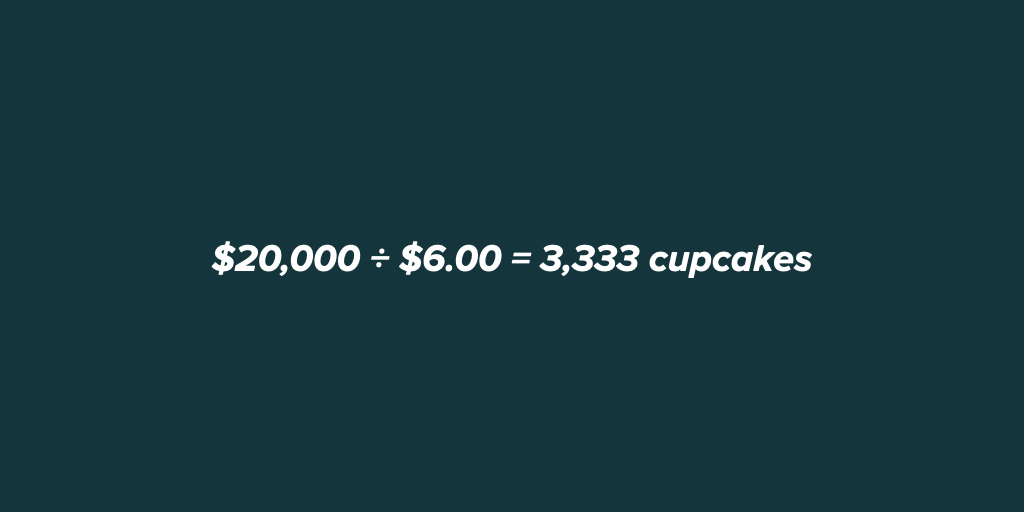Article • 9 min read
Sales volume: Definition, formula, and how to increase it
Sales volume refers to the number of units sold during a specific reporting period. Knowing how to calculate sales volume gives your company a strong grasp on product movement and potential shifts.
출처 Donny Kelwig, Contributing Writer
최종 업데이트: March 12, 2022
When you think of measuring your company’s success, what markers come to mind? Perhaps you consider revenue KPIs or customer enrollment. Maybe you dream of your run rate increasing as your cost of sales decreases. No matter what success looks like to you, it’s unlikely you measure it in sales volume. But perhaps it’s time to start.
Sales volume is a largely overlooked measuring tool, but its benefits to your company can’t be ignored. In this piece, we’ll discuss the sales volume definition, why sales volume matters, ways to calculate sales volume, and strategies to improve your sales volume numbers.
What is sales volume?
Sales volume refers to the number of units your company sells during a specific reporting period. This period could be a month, a quarter, or a year depending on what level of sales volume you’re seeking to analyze. Investors frequently look at sales volume to assess the health of a growing or contracting company.
Your sales volume alone won’t indicate much in the way of revenue or net sales. For that, you’d need to utilize the total revenue formula. But sales volume can still inform a large number of sales decisions for your team. It’s a great tool to help you understand your sales metrics in regards to customer preference, inform your sales data, and assist in sales forecasting.
Why does sales volume matter?
You might think that sales volume isn’t important as long as you’re tracking your company’s financial growth. But the truth is that the two are heavily linked, and both need to be analyzed on the path to success.
Let’s say your company sells two products: Product A is worth $5, and Product B is worth $20. In one month, you sell 700 units of Product A and 300 units of Product B. Financial analysis says that Product A brought in $3,500 of revenue and Product B brought in $6,000. Product B appears to be more valuable to the company, so you might think it’d be wise to cut back production on Product A.
But sales volume analysis on the same products paints a different picture. Taking money out of the equation, 700 units of Product A were sold and 300 units of Product B were sold. From a sales volume point of view, Product A had a higher success rate amongst customers and benefited more in marketing than Product B, which means it should be pushed further.
Balancing the perspectives of finances and sales volume is key to making smart product decisions.
How to calculate sales volume
There are several ways to determine sales volume. The method you choose will depend on what you want to use it for. In this next section, we’ll address the primary ways to calculate sales volume, take a look at sales volume variance, and discuss the break-even sales volume method for when things are headed south.
Sales volume formula
There are two main formulas for sales volume: the unit formula and the percentage formula.
The unit formula multiplies the number of units by the time period. For example, if a bakery sells 1,000 cupcakes in one month, then the sales volume for cupcakes is 1,000.

If this same bakery wanted a quarterly measurement, it would take the monthly volumes for that quarter and add them together.
This formula may seem like common sense, but it’s useful for tracking changes in the number of units sold, especially if you’re making comparisons across your product line and considering any product discontinuations.
Meanwhile, the percentage formula calculates the percentage of units sold of a singular item. The formula is: (Units of individual product sold x 100) ÷ Total units of all products sold = Percent of total sales volume.
Let’s stick with cupcakes for this example. Say the bakery sold 1,000 cupcakes this past month, just as before. But it also sold 2,000 cookies and 750 wedding cakes. In this case, the formula would be:

This means that of the all baked goods sold during the month, cupcakes accounted for 26.7 percent of units.
It’s important to note that this does not take pricing into account. Just because cupcakes accounted for 26.7 percent of units sold does not mean they accounted for 26.7 percent of revenue generated. That said, this percentage is extremely useful when evaluating customer trends and planning for the future.
If the bakery was planning to do a holiday theme for the month, for instance, it would need to accurately order supplies. Assuming cupcakes landed at around 26.7 percent sales volume every month, the bakery could order enough supplies to assume 26.7 percent holiday cupcake sales. Most businesses in this situation want to account for a buffer as well, though, and that’s where sales volume variance comes in.
Sales volume variance formula
The sales volume variance formula helps you predict and calculate the negative or positive impact of selling fewer or greater units than you anticipated.
The formula generally used is: (Units sold – Projected units sold) x Price per unit = Sales volume variance.
Let’s stick with our bakery as they work their way through the holiday month. Based on the sales volume of previous months, the bakery assumes around 26.7 percent of their sales will come from cupcakes. Given that they generally sell 1,000 cupcakes per month, and holidays tend to create a sales uptick, they account for selling approximately 2,000 cupcakes. At the end of the holiday month, the bakery runs out of cupcake supplies because they sold 2,500 cupcakes. Their sales volume variance would look like this:

Of course, this is a positive example of variance. A new bakery might have opened across the street, resulting in our bakery selling only 1,500 cupcakes and leading to this negative variance:

Situational variance, similar to the examples above, is bound to happen. That said, if you’re consistently seeing negative variance in your sales volume analysis, it might be time to look at shifting products or pricing to turn that negative into a positive.
3 keys to unlocking a measurable sales pipeline
Learn how to establish a measurable sales pipeline that drives repeatable, predictable sales growth.
Sales volume break-even formula
One way to try and shift negative variances is to look at your break-even sales volume. This is the number of units you would need to sell of a certain product in order to earn a profit of $0. This is a useful formula if you’re deciding whether or not to call it quits on a certain product or evaluating when to cut back on spending.
The formula for break-even sales volume is: Projected spending over a period of time ÷ Price of the single unit of product = Number of units to break even.
Sticking with cupcakes, let’s say our bakery was spending approximately $20,000 per month. Assuming they only sold cupcakes at $6.00, their break-even sales volume formula would be:

If the bakery needs to sell 3,333 cupcakes a month to break even but they’re selling only 1,000, the break-even sales volume tells them they either need to ramp up their marketing efforts or increase the price of their cupcakes. Luckily, there are many ways to increase your sales volume.
How to increase sales volume
Even the most successful companies continually want to increase their sales volume. But what are the best ways to go about making that increase happen? And where should these strategies be implemented in your sales pipeline?
Strategies
Let’s take a look at six key strategies for increasing your sales volume.
How a CRM can help increase your sales volume
There is a seventh strategy to increase your sales volume that we haven’t mentioned yet, and that’s partnering with a strong CRM. When you have easily accessible and well-organized records of your customer interactions, the strategies listed above are much easier to implement and benefit from.
With Zendesk Sell, your pipeline visibility becomes top priority, making communication and alignment between sales, marketing, and administration a breeze. Zendesk also partners with hundreds of apps and software programs, so if you’re in B2B sales, your new CRM will naturally align with your business partners’ programming.
Request a demo today and see how our CRM software can boost your sales volume.
